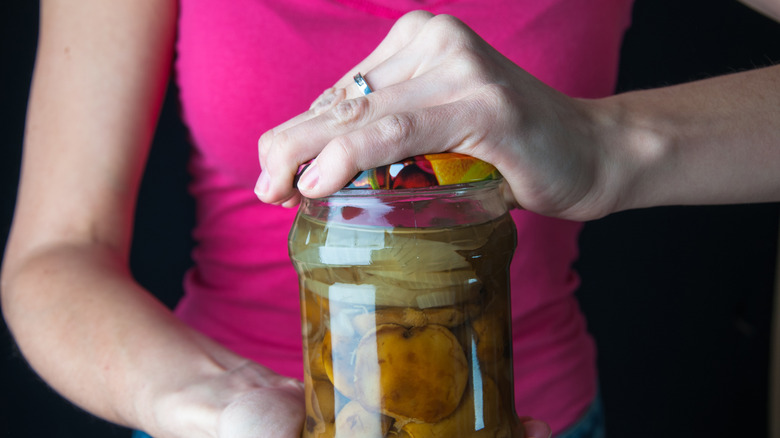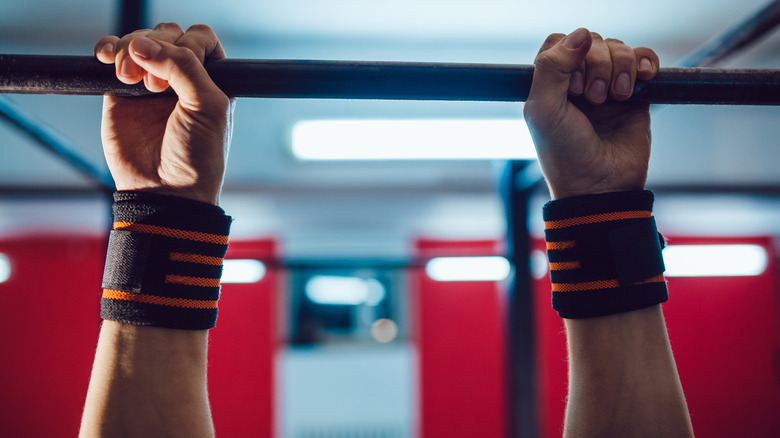Here's What's Really Causing Your Poor Grip Strength
You might not give your grip strength much thought, but it turns out to be pretty important as an indicator of overall health. Healthline reports that grip strength might also be a predictor of cognitive function. According to SELF, poor grip strength is a predictor for many diseases, and it is linked with long-term mortality, regardless of BMI.
Harvard Health Publishing notes that grip strength might even indicate your risk of having a heart attack or stroke. There is no real explanation for this connection, but as Verywell Health explains, it may simply be a matter of losing muscle mass with age.
Grip strength is significant because you use your hands every day. Verywell Health points out that grip strength comes into play when we perform simple activities like opening jars, turning doorknobs, and carrying groceries. As you age, better grip strength will allow for greater mobility, and it may help prevent disability.
Poor grip strength is linked to weaker muscles
The primary reason for poor grip strength is weak muscles in the hands and forearms. SELF explains that these muscles don't develop the way other muscles do. You can't increase muscle mass in your hands like you can in your biceps or quadriceps. Interestingly, thumb strength often determines grip strength.
You can measure grip strength with a hand-held device called a dynamometer, per Verywell Health. A healthy reading for the average man is 72.6 pounds, and for the average woman, that number is 44. If you don't have a dynamometer, no worries. According to SELF, another easy test is to hang from an overhead bar, such as a pull-up bar. If you can hold for 30 seconds, you're not doing too bad. Anything less means you might need to try to strengthen those muscles.
Healthline recommends some easy exercises to improve your grip. One is wringing a soaking wet towel until no water comes from it. Soak it again, and then repeat the movement working in opposite directions at least three times. You can also use your fingers (but not your thumb) to squeeze a tennis ball as tight as you can and release, anywhere from 50 to 100 times throughout the day. Walking with dumbbells in your hands with your arms at your sides for 50 to 100 feet a few times per day is another option.

